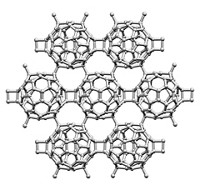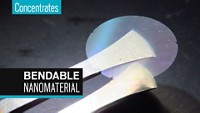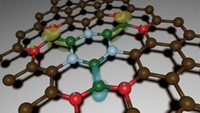Advertisement
Grab your lab coat. Let's get started
Welcome!
Welcome!
Create an account below to get 6 C&EN articles per month, receive newsletters and more - all free.
It seems this is your first time logging in online. Please enter the following information to continue.
As an ACS member you automatically get access to this site. All we need is few more details to create your reading experience.
Not you? Sign in with a different account.
Not you? Sign in with a different account.
ERROR 1
ERROR 1
ERROR 2
ERROR 2
ERROR 2
ERROR 2
ERROR 2
Password and Confirm password must match.
If you have an ACS member number, please enter it here so we can link this account to your membership. (optional)
ERROR 2
ACS values your privacy. By submitting your information, you are gaining access to C&EN and subscribing to our weekly newsletter. We use the information you provide to make your reading experience better, and we will never sell your data to third party members.
Materials
A Glimpse Of Glass On Graphene
Images of two-dimensional silica glass confirm 80-year-old theoretical model
by Bethany Halford
February 13, 2012
| A version of this story appeared in
Volume 90, Issue 7
The thinnest possible layer of silica glass has been prepared on a graphene surface, giving scientists the first opportunity to directly observe the atomic arrangement of this amorphous material (Nano Lett., DOI: 10.1021/nl204423x). Researchers led by David A. Muller of Cornell University and Ute Kaiser of the University of Ulm, in Germany, were trying to grow graphene on copper foil when an air leak in their chemical vapor deposition apparatus caused the copper to react with a glass tube, leaving a two-dimensional silica layer attached to the graphene. With a 2-D layer of silica in hand, Muller and Kaiser realized they could, for the first time, study the glass with atomic-resolution transmission electron microscopy. The striking images they obtained match models proposed in 1932 by University of Chicago physicist W. H. Zachariasen. The amorphous structures have variable bond angles between SiO2 molecules, introducing structural disorder in which there are continuous networks of rings of different sizes. Muller and Kaiser suggest the new class of 2-D glasses could find use in semiconductors or layered-graphene electronics.





Join the conversation
Contact the reporter
Submit a Letter to the Editor for publication
Engage with us on Twitter